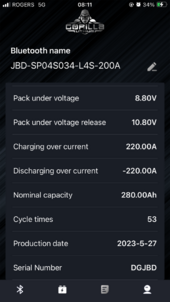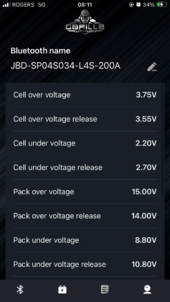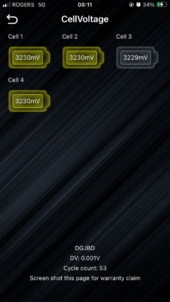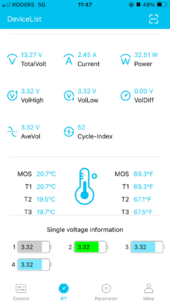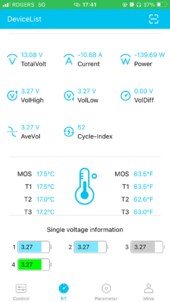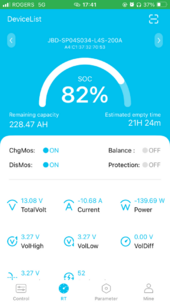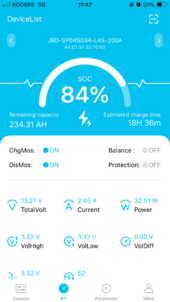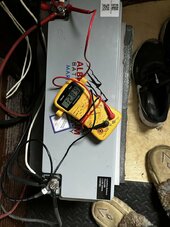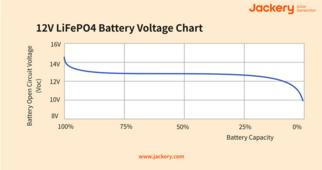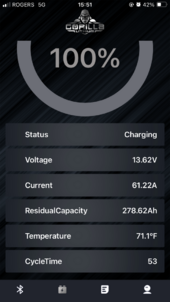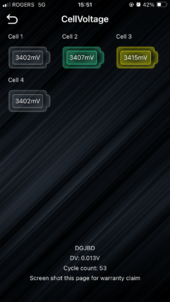wattmatters
Solar Wizard
Probably.Then my BMS is lying to me
State of charge (SOC) indicators of BMSs will drift away from the actual SOC over time, especially if the battery is never really fully charged for a long time.
Many of them rely on a low or high cell or pack voltage warning state occurring before they reset the SOC to 0% or 100%.
If you want to track SOC with better accuracy then a quality shunt will help (but even they are not perfect). Else just make sure the battery gets a decent full charge occasionally so that the BMS is reset to 100%.
14.0 V is likely not high enough to reset the BMS SOC indicator but from a battery charge perspective, provided the battery charge current has tailed off then 14.0 V is plenty high enough and the battery will be 99.x% full.
LiFePO₄ is tricky chemistry to track SOC using voltage due to the voltage barely changing over a wide range of SOC (between 20-80% SOC there is not much change in voltage). As a result voltage is not a good indicator of LiFePO₄ SOC except when the battery is at a very high or very low state of charge - at the SOC extremes the voltage does change a lot more. With other chemistries such as lead acid, sodium and NMC then (no load) voltage more or less tracks pretty well with SOC.
This is why SOC sensors needs the battery to have achieved a full state of charge at the recommended max charge voltage with charge current having tailed off to a very low level.



